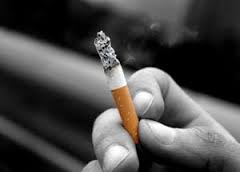Smoking Experimentation, Moderate-to-Vigorous Physical Activity, and associated Psychosocial and Demographic Correlates among Mexican Origin Youth
Keywords:
moderate-to-vigorous physical activity, smoking behavior, shared psychosocial correlates, Mexican origin youth
Abstract
Moderate-to-vigorous physical activity (MVPA) may deter adolescents from smoking initiation; such an approach requires knowledge of psychosocial risk and protective factors associated with both physical activity and smoking experimentation. This paper examines such psychosocial factors across four groups of adolescents identified by crossing smoking experimentation (yes/no) with completes adequate MVPA (yes/no). In 2008-09, 1,098 Mexican origin youth (50.4% girls, mean age 14.3 years (SD=1.04)) provided data on smoking behavior, physical activity, alcohol use, acculturation, peer and parental smoking, BMI, body image, smoking outcome expectations, anxiety, subjective social status (SSS), body image and sensation-seeking tendencies. We conducted Pearson’s ï£2 tests to examine associations between a) MVPA and smoking and b) demographic variables and the four groups identified by crossing smoking experimentation with MVPA. Next, adjusting for age and gender, we completed analysis of covariance to examine differences in psychosocial factors across the four groups. In our sample, 22.4% had experimented with cigarettes, and 29.3% completed adequate MVPA. Both behaviors were more prevalent among boys. Although not statistically significantly higher, 32.9% of experimenters completed adequate MVPA compared to 28.3% among non-experimenters. Experimenters who complete adequate MVPA reported the highest levels of thrill and adventure seeking, while those who complete inadequate MVPA reported lower SSS and more body image concerns than non-experimenters (p<0.05 for all). Our findings highlight an opportunity to address MVPA as an alternative to smoking among Mexican origin youth with high thrill and adventure sensation seeking tendencies, 82% of whom have experimented and 69% of who complete MVPA.
Published
2014-05-27
How to Cite
Wilkinson, A. V., Stigler, M. H., Okeke, N. L., & Spitz, M. R. (2014). Smoking Experimentation, Moderate-to-Vigorous Physical Activity, and associated Psychosocial and Demographic Correlates among Mexican Origin Youth. International Journal of Integrative Pediatrics and Environmental Medicine, 1, 1 -11. https://doi.org/10.36013/ijipem.v1i0.2
Issue
Section
Articles
Policy for Articles with Open Access
Authors who publish with this journal agree to the following terms:
Authors retain copyright and grant the journal right of first publication with the work simultaneously licensed under a Creative Commons Attribution License that allows others to share the work with an acknowledgement of the work's authorship and initial publication in this journal.
Authors are permitted and encouraged to post links to their work online (e.g., in institutional repositories or on their website) prior to and during the submission process, as it can lead to productive exchanges, as well as earlier and greater citation of published work.





3.jpg)
